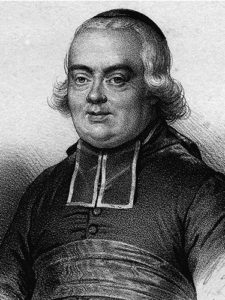Introduction

Born in Versailles in 1712, Charles Michel de l’Epee was the son of an architect who studied theology and law before focusing on charity work in Paris. During this time he met two young deaf sisters who lived in the slums of Paris and communicated by using sign language. This inspired him to change countless lives at a time when many deaf people were discriminated against.
He founded the first public school for the hearing-impaired in France and devoted his life to developing the world’s first sign alphabet for the deaf. For his revolutionary methods in aiding the deaf to communicate and creating a systematic method to teach the hearing impaired, he is known as the “Father of the Deaf”.
He established the school of De l’Epee (Institution Nationale des Sourds-Muets à Paris), which was entirely funded by himself. According to him, “It is not to the rich that I have devoted myself; it is to the poor only. Had it not been for these, I should have never attempted the education of deaf and dumb.”
The Instructional Methods of Signs for the Deaf
According to Britannica, “The Instructional Method of Signs is a real educational method emphasised using gestures or hand signs, based on the principle that “the education of the hearing impaired and mutes must teach them through the eye of what other people acquire through the ear.” He recognised that there was already a signing hearing impaired community in Paris but saw their language as primitive.
Although he advised his (hearing) teachers to learn the signs for use in instructing their hearing impaired students, he did not use their language in the classroom. Instead, he developed an idiosyncratic gestural system using some of this lexicon, combined with other invented signs to represent all the verb endings, articles, prepositions, and auxiliary verbs of the French Language.”
Epee was one of the first few individuals to assert that the deaf were fully functioning citizens of society, and that they should be given every right granted to the non-hearing impaired. For this he is recognized as single-handedly bringing the deaf community into their own social class.
Epee recognized the importance of sign language and eventually this led to the French National Assembly recognizing him as a “Benefactor of Humanity”. This led to strides being taken to assert the rights of hearing impaired people under France’s Declaration of the Rights of Man and of the Citizen.
Epee wrote ‘Institution des sourds-muets par la voie des signes methodiques’ (“Educating Deaf-Mutes Using Methodical Signs”), which was published in 1776. In 1784 he wrote, ‘La veritable maniere d’instruire les sourds et muets.’ He also began a dictionnary of signs meant for the deaf, which was finished by the Abbe Sicard. Sicard carried on Epee’s work, and became the bridge between French Sign Language and American Sign Language.